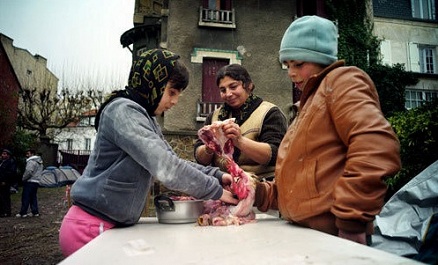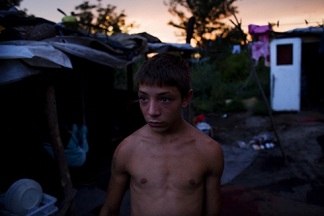The plight of the Roma in Romania
Diana Toma
WSWS
The brutal austerity measures introduced by the right-wing government led by Emil Boc in Romania have led to a severe worsening of living standards for the population in this member state of the European Union. Large-scale redundancies and wage cuts for public sector workers, cuts to social state provisions and rapidly rising prices for basic goods have made life for the average Hungarian increasingly precarious.
Especially hard hit in Romania is the Roma minority, which already faces discrimination and suffers from extreme poverty. The risk of poverty in the Roma community is three times higher than the national average, according to 2003 figures. A World Bank report revealed that approximately 70 percent of the Roma population live on less than US$4.30 a day.
A significant proportion of the Roma community suffers from a broad spectrum of social disadvantages. These include a low level of education and training, leading to a lack of qualifications, high numbers of children to support, poor living conditions, and virtually no chance for employment on the regular labour market. In addition, the Roma population is subjected to social exclusion and marginalisation as a result of racial discrimination.
The low level of participation in the labour market is the main problem in the Roma community. According to official data contained in the 2002 census, only 23 percent of the Roma population were part of the country’s actively employed population.
There are major deficiencies recorded in the professional field. More than 70 percent of the Roma minority have no qualifications or undertake activities that do not require any formal training. The proportion of temporary day workers (42 percent of the Roma population) makes clear they are in a difficult situation in terms of employment and have a minimum income for their needs. Many Roma lack any experience in legally recognised economic activity or have suffered long periods of unemployment (more than 50 percent of the Roma population were unemployed for more than 27 months).
The living conditions of the Roma are highly precarious. Often, their homes are not connected to electricity, heat or sewerage. Inadequate income leads to a low participation in the education system. As a result, dropping out of school and non-participation in education are more frequent in the Roma population than the national average. More than a third of the Roma population (39 percent) are affected by illiteracy. Some discriminatory practices in relation to the population of Roma—including teaching Roma in separate classes—have only worsened their situation.





























